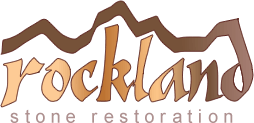Removing Urine Stains and Odors from Stone
Urine accidents on natural stone in homes or businesses can cause staining and odor problems. Maybe your new puppy made a mess on your marble floor. Perhaps in front of the urinals in a business restroom the granite is stained and smells of urine. Whether it’s your puppy, poor aim, or some other cause, there are ways to remove these stains and odors. Here are some instructions for urine stain removal, and if odors linger after stain removal, we've also included instructions for urine odor removal.
The Chemistry of Urine
Urine is unique in that it is a substance that comes out of the body as an acid, and when it starts to dry, it becomes an alkaline crystal, which absorbs moisture. In the case of urine accidents, stains can grow as these crystals absorb moisture. If the stone is a polished marble or limestone, it can become etched due to the initial acid reaction, but it can also be etched from the strong alkali. If this is the case, the stone may need to be repolished.
Removing Natural Stone Urine Stains
Removing urine stains can be tricky and timing is everything. The quicker you can get to the stain the easier it will be to remove.
As soon as you can, blot the urine up with some dry paper towels. Do not wipe, since this will only spread the stain. Clean the stain with some dish soap and water. Mix about one teaspoon of dish soap in a gallon of water. Apply this solution to the wet area and allow it to sit for a minute or two. Blot the solution up and rinse with clean water. If there is still a stain, then you will need to apply a poultice.
Poultice To Remove Urine Stain
A poultice is a mixture you will create and apply to break down and draw out the stain from the pores of the stone.
What You'll Need
- Flour (use only white flour) or Diatomaceous Earth
- Hydrogen Peroxide 20 Volume (available at most beauty supply stores or order on-line)
- Plastic wrap (Saran Wrap or equivalent)
- Plastic putty knife
- Low contact painters’ tape
- Mixing bowl or cup
- Plastic or wooden spoon
- Paper towels or a soft white cloth
Instructions
- Wet the stained area with distilled water. Pre-wetting fills the pores of the stone with water and will isolate the stain and accelerate the removal by the chemical.
- Prepare the poultice. Take a small amount of flour and pour the peroxide into the flour and stir until you reach a creamy consistency.
- When you apply the poultice to the stain, be careful not to spill any on the non-stained areas. Apply the poultice approximately 1/4-inch thick and overlapping the stain area by about one inch.
- Cover the poultice with plastic. Use low contact painters' tape to secure the plastic down and seal the edges. Do not use other types of tape, because the adhesive can damage the stone. It also helps to poke several small holes in the plastic so that the powder will dry out. Failure to do this may result in the poultice staying wet.
- Allow the poultice to dry thoroughly. This is an especially important step. The drying of the poultice is what pulls the stain from the stone into the poultice material. If the poultice is not allowed to dry, the stain may not be removed. Drying usually takes from 24 to 48 hours.
- Remove the poultice with a plastic putty knife. Rinse with distilled water and buff dry with paper towels or a soft white cloth. If the stain is not removed, apply the poultice again. It may take up to five applications for difficult stains.
Removing Natural Stone Urine Odors
Once the stain is removed, the urine smell may still be present. The nasty smell you may experience is the result of bacteria using the urine as a food source. So, to eliminate the odor, you need to kill the bacteria. Here is how to neutralize the odor:
There are numerous products on the market designed for eliminating carpet odors. These same products can be used for stone. Make sure the product is enzymatic. Many products will only mask the odor. Since you want to eliminate the odor, an enzymatic product is necessary.
What You'll Need
- Enzymatic carpet cleaner
- Plastic wrap (Saran Wrap or equivalent)
- Paper towels or a soft white cloth
Instructions
- Spray the affected surface liberally with the cleaner using a pump sprayer or spray bottle.
- Cover with plastic for 1 to 2 hours to slow the evaporation rate and allow time for the first application to soak deeply into the stone.
- Note that as the first application of cleaner goes to work, the urine odor may intensify at first. This is typical with old or heavy urine deposits and indicates that the urine is being loosened and is rising to the surface.
- Remove the plastic and blot the floor dry with paper towels or soft white cloths. Expect the blotting towels or cloths to be colored yellow and smell heavily of urine. Dispose of the soiled towels or cloths.
- Reapply the cleaner. Allow to dry 1 to 2 hours. (In humid climates lacking AC, drying may take longer.)
- Continue to reapply as needed, with 1 to 2 hours drying time between applications or until the odor is removed.
The above processes are time-consuming but will be well worth the effort if done properly.
Urine Etch Damage on Natural Stone
It is possible in the case of polished marble or limestone that discoloration may persist despite your stain removal procedures. If the stone looks dull or has texture when you run your finger across the surface, then etching may have occurred. Sometimes, minor etch damage on stone with a polished finish can be removed using a marble polishing compound. For other finishes or deep etch damage, professional honing and polishing will be necessary. Your stone and tile restoration technician, who has the expertise to deal with this problem and can determine what needs to be done in your particular situation. Feel free to contact us for further guidance.
This article is one of a series of articles written and published on behalf of Surface Care PRO Partners.

